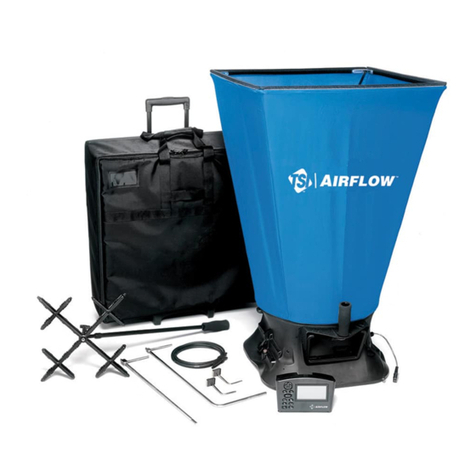
6. Use in Airways
In large airways the presence of the instrument will have a negligible
effect, but in small airways the blockage caused by the instrument, hand
and arm will cause the airstream to accelerate slightly as it passes the
rotating vane. This effect is somewhat variable depending on the size of
the airway and the distance from the duct walls. The error can be virtually
eliminated by mathematical correction to allow for the reduction of free
area caused by the obstruction. For this purpose the effective front area of
the instrument (not including hand or arm) can be taken as 0.019m2
(0.204ft2). The effect can be ignored completely if the duct exceeds about
500mm diameter (1’ 9”).
7. Possible sources of error
The above method ignores the effects of the reduced velocity at the duct
walls. A more precise method is shown in BS1042 Part 2.1 Log
Tchebycheff method.
This procedure is satisfactory for use in ducts, and at unobstructed
apertures.
Significant errors may occur if the aperture is covered by a grille,
particularly if this is of the type having adjustable direction vanes and/or
dampers. The airstream issuing from such a grille is invariably very
disturbed, consisting of many small areas of high velocity interspersed with
areas of low velocity.
The transitions between these areas are highly turbulent, and there may
even be some reversed flow. If maximum accuracy is required, it is
advisable to make up a short length of test ducting which is just larger than
the overall dimensions of the grille. This duct can be of any convenient
rigid material (eg stiff cardboard) and should have a length about twice the
diagonal measurement of the grille. The duct should be placed over the
grille, and sealed to the wall with adhesive tape. Measurements of flow can
now be conducted, as already described, at the unobstructed end of the test
duct. Use the cross sectional area of the duct (not the grille) for the
calculations.
It should be noted that using an AV30 instrument to take spot readings
across a duct as described earlier can result in an exaggerated velocity
indication in applications where there is a significant variation in velocities
across the test area. This is caused by the inability of the rotating vane to




























